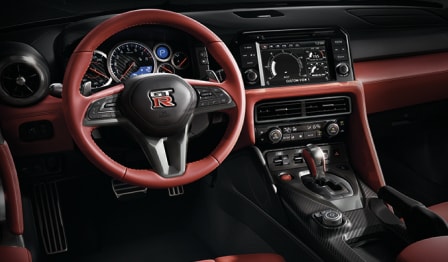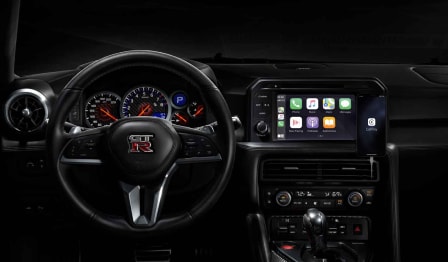Now you can reserve a Nissan online in a few simple steps. Learn more about how this new service works and get started today. [[1744]]
-
565 STANDARD HORSEPOWER
Hand-assembled by one of five master craftsmen, GT-R Premium offers 565 hp and 467 lb-ft of torque. -
ALL-WHEEL DRIVE HANDLING
The feel and response of rear-wheel drive with the confidence of AWD. -
NISSAN BY BREMBO® BRAKES
Massive stopping power comes from 6-piston front and 4-piston rear calipers. [[1523]]
Engine
The heart of a legend
Nissan challenged convention at every point in the GT-R’s development. Instead of a large, heavy, constantly thirsty engine, the Nissan GT-R is powered by a precision-engineered, twin-turbocharged 3.8-litre V6, which produces a monstrous 565 hp and an equally immense 467 lb-ft of torque. It’s also built with strength in mind – from a closed-deck cylinder block to a ladder frame structure – for added support.
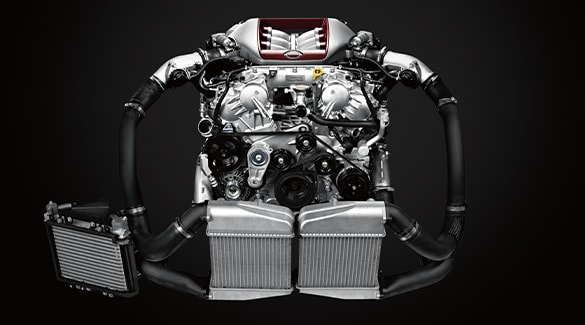
IHI® turbocharger
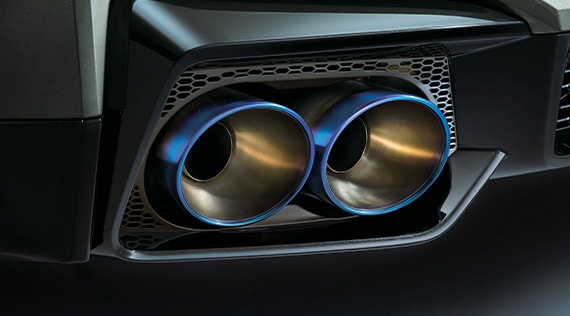
Hand-formed titanium exhaust
Engineering and Standards
Shaping the masterpiece
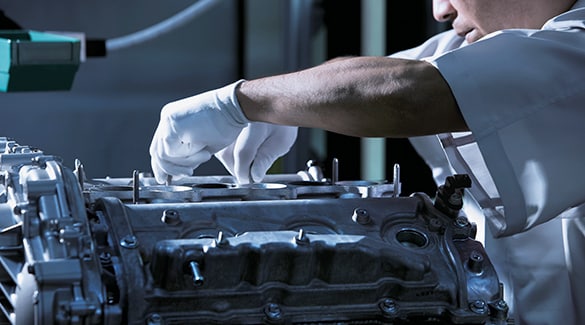
One engineer, one engine
Each GT-R bears a badge of honour. With a mere five in existence, the Takumi – master craftsmen of the highest order – are the only people on Earth who are allowed to hand-assemble GT-R engines. Fittingly, each GT-R is affixed with a plaque carrying its Takumi's name.

Tested by our best drivers
AS Class drivers – the top development drivers at Nissan – help create a vehicle that will excel on the road as well as the racetrack. Drivers include an Autobahn expert, a marketability expert and a “Ringmeister” who tests the GT-R at the legendary Nürburgring. [[2204]]
Transmission
Shifting how you drive
The longer a shift takes, the less time power is being put to the ground. The GT-R’s sequential, 6-speed dual-clutch transmission can snap off lightning-quick gear changes when in R-Mode.
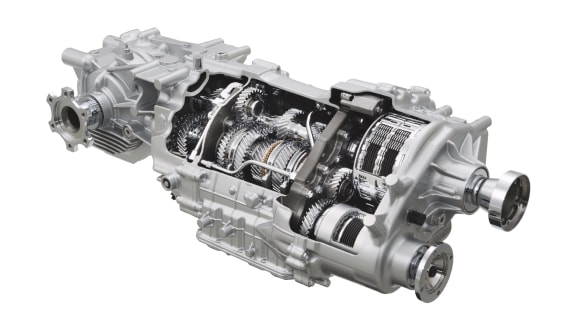
Dry sump lubrication system
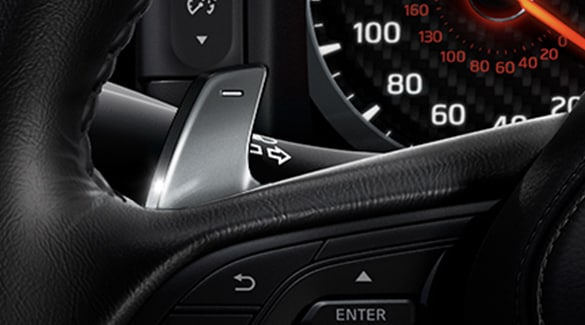
Two clutches, no clutch pedal
Handling Technology
Performance never wavers
While most sports cars stay in the garage or make a hasty retreat during winter, the Nissan GT-R powers through with ATTESA ET-S®: one of the most advanced All-Wheel Drive and Vehicle Dynamic Control (VDC) systems ever used in a production vehicle. [[2036]][[2090]]

All-Wheel Drive (AWD)
Handles every season
Instead of the traditional 50/50 torque split between front and rear axles, this electronically controlled All-Wheel Drive system sends up to 100% of the available torque to your rear wheels, and can redirect up to 50% to the front wheels on slippery terrain. That delivers the quick steering response of a rear-wheel drive vehicle, with the added confidence that only AWD can offer. Plus, it works with Vehicle Dynamic Control to monitor your steering and braking. If the system detects any oversteer or understeer, it can compensate by reducing engine speed and applying select brakes. [[2036]][[2090]]
Performance Switches
Dimensions of driving
GT-R’s easy-to-use 3-mode system is always ready. Three switches allow for on-the-fly adjustments of specific performance parameters for the transmission, suspension and Vehicle Dynamic Control (VDC) system. [[2090]]
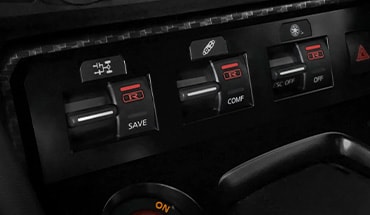
R-Mode
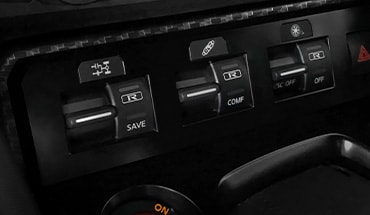
Normal Mode
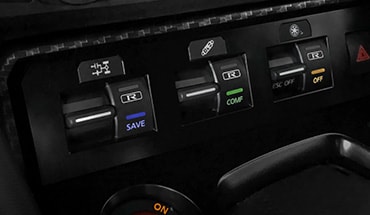
Special Modes
Chassis Design
The pursuit of precision
In another break with convention, Nissan GT-R’s Premium Midship platform places the engine farther back in the chassis for enhanced handling. This unique layout also mounts the transmission with the transfer case in the rear of the GT-R, creating an independent rear transaxle in an All-Wheel Drive vehicle.
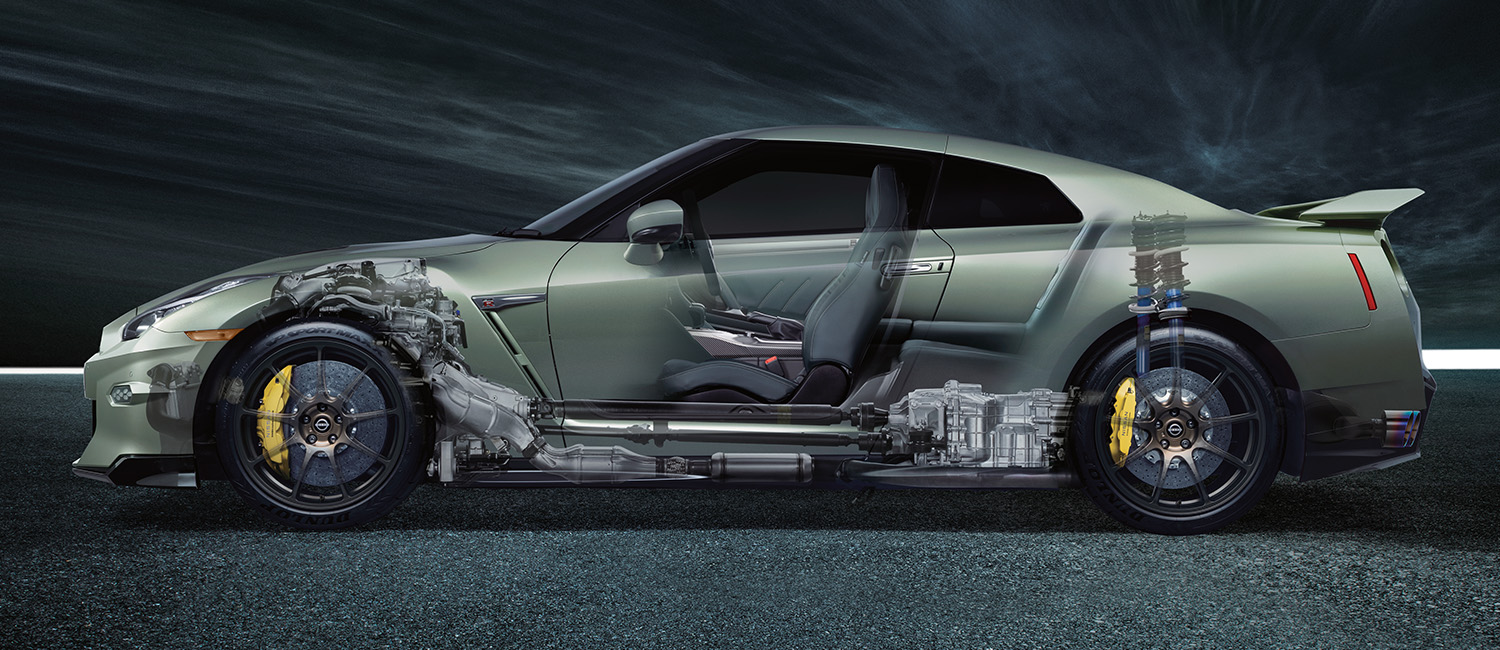
The 2024 Nissan GT-R® NISMO®
The ultimate GT-R experience can be found in the 2024 GT-R NISMO® with its 600-hp engine and advanced performance and aerodynamics.

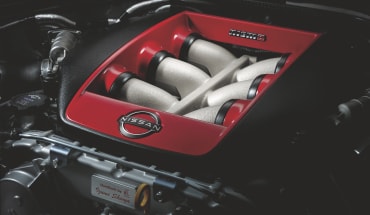
NISMO® High-capacity GT3 turbochargers
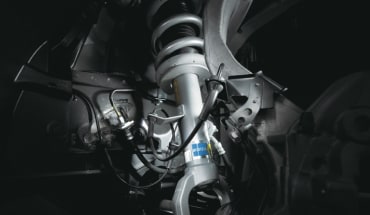
Competition-tuned NISMO® suspension
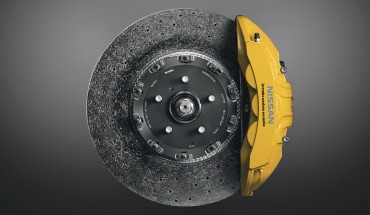
Nissan/Brembo® Carbon Ceramic Braking System [[1523]]
Performance Components
The driver is in the details
From the very frame on up, every aspect of the GT-R has been designed, scrutinized and crafted to deliver unparalleled performance. One press of the accelerator or turn of the wheel is all it takes to realize you're driving something very different, and very special.
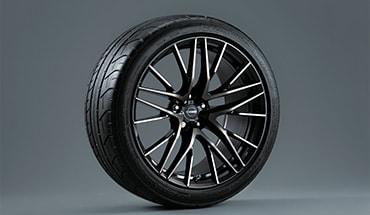
Forged-aluminum wheels
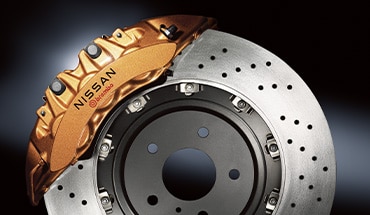
Monoblock calipers with floating disc rotors
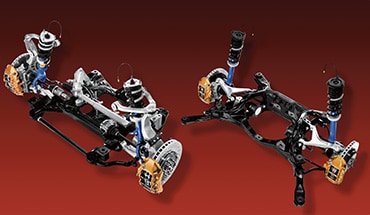
Bilstein® DampTronic® shock absorbers

Multi-material structural components
Aerodynamics
Sculpt the wind
Relentless tuning has given the GT-R’s aerodynamics an incredibly clean drag coefficient of just 0.26 Cd. While you see a substantial, powerful sports car, it punches through the air like a low-slung, mid-engine supercar.
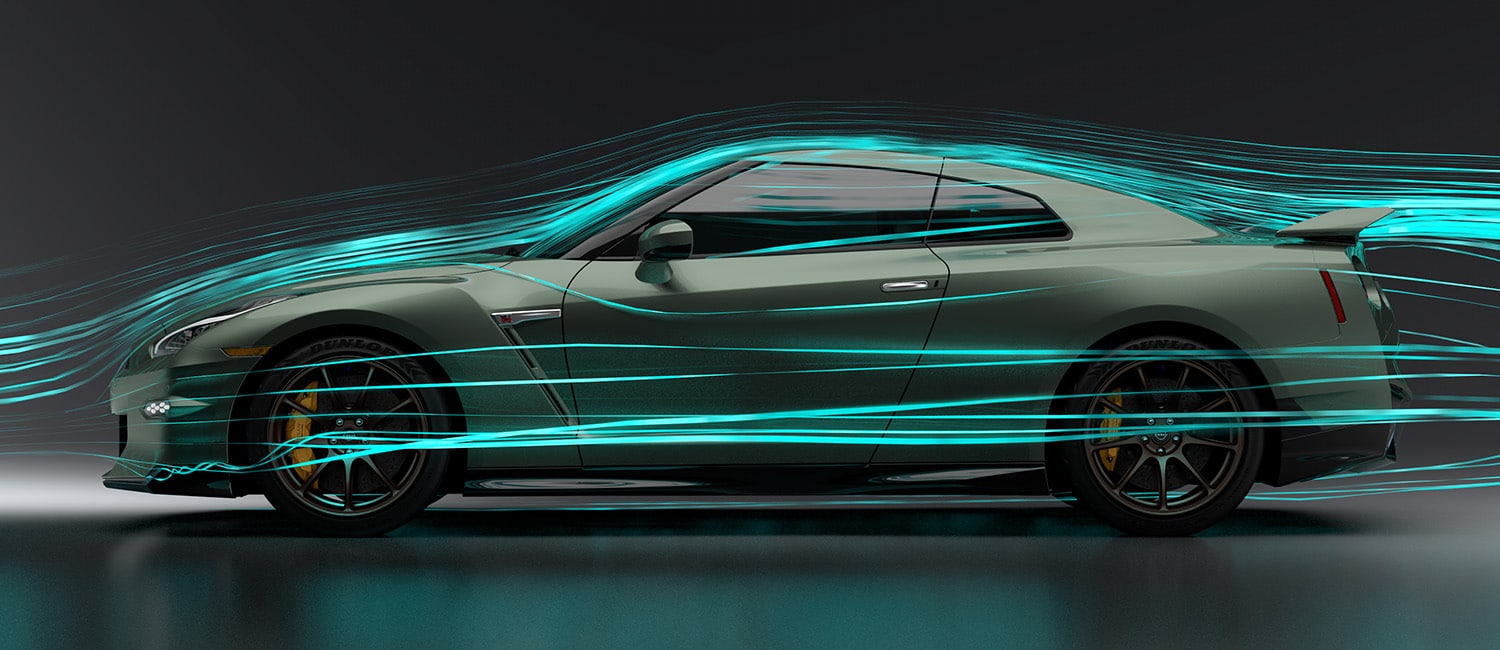
Coefficient of drag
Aerodynamic downforce
Cooling
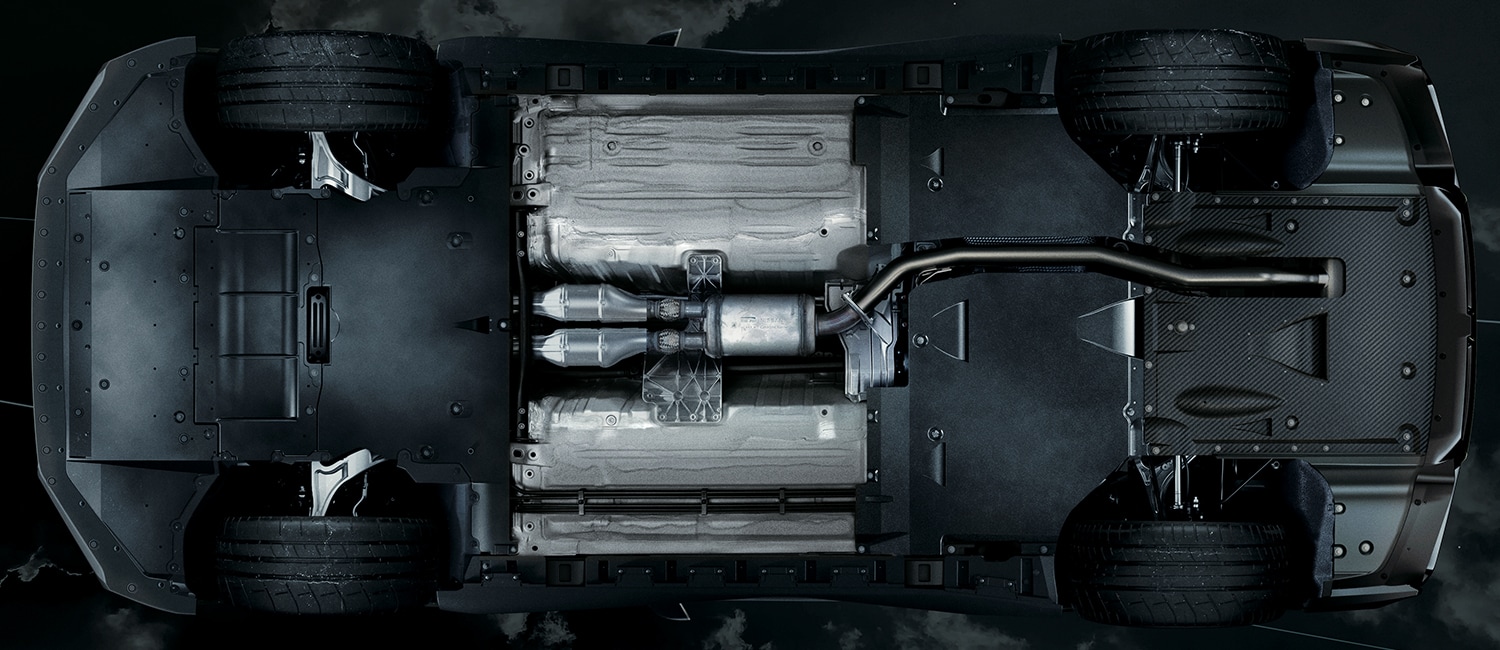
Exceptional from every angle
The average car has exposed working gears underneath – where the wind whips around – creating lift and slowing you down. But the Nissan GT-R isn’t an average car. Its underbody is covered by composite panels, giving it a flat, aerodynamic surface. At the front of the car, this flat underbody is accelerating the air and channeling it over the brakes, cooling them down. At the rear of the car, a carbon-fibre diffuser takes that accelerated air and slows it down, creating a vacuum effect that helps GT-R connect to the road, while a duct in the diffuser helps cool the titanium exhaust.
Continue your journey

Discover Your Nissan

Explore Payment Options


















